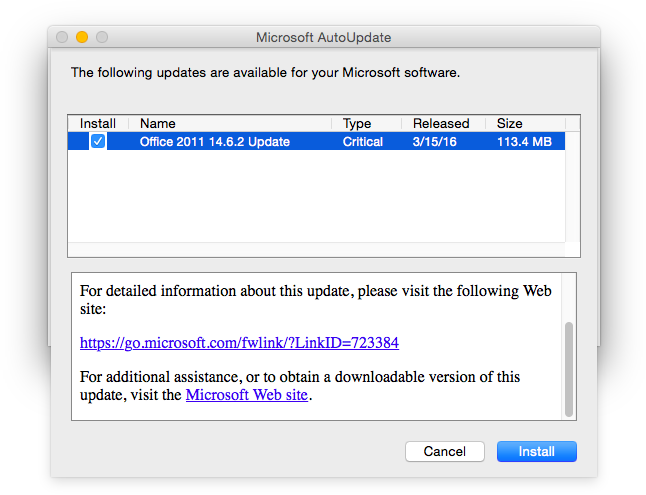

TROUBLESHOOT OFFICE 2011 FOR MAC ISSUES INSTALL
If testing outside the MacBook Pro looks positive, you can install the drive back into the MacBook Pro to see what happens. If you can erase your SSD externally and install OS X to the drive, the SSD is functioning normally. If you are having problems booting to the SSD externally, or haven’t installed OS X to the drive, you will now want to follow the steps for erasing your SSD, then proceed with reinstalling the operating system. Bear in mind that the SSD might be slower because it’s now working through the USB interface, but you should be able to have your desktop load and use any software you have on the drive. By selecting the SSD and pressing Enter, you can test the drive to see how it responds. If you already have OS X® installed to the drive, this will bring up Startup Manager and you can select the SSD (now an external USB drive) as your boot device. When the drive is removed, you will want to connect it with some sort of external drive enclosure, or a USB to 2.5-inch drive adapter cable like this one available at .Īfter the SSD is physically connected externally to the Macbook Pro, you can hold the OPTION key down while turning the system on.

You can use one of our install documents on our Mac SSD support page. When removing your SSD, make sure to follow appropriate install guides. Please note that even though your old drive, or a different drive, might not be exhibiting any issues inside the MacBook Pro, this doesn’t rule out a potential hardware issue inside the system. An important step for isolating the source of your problems is to physically remove the drive from the MacBook Pro to rule out any potential internal issues in the computer itself.


 0 kommentar(er)
0 kommentar(er)
